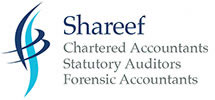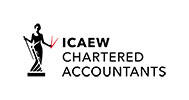One-person companies and the employment allowance
The NI employment allowance has increased from £5,000 to £10,500. The bad news is that companies with only one person who’s also a director on their payroll aren’t entitled to it. How can they qualify with just one simple low-cost step?

What’s the employment allowance?
The employment allowance (EA) is the amount that employers can deduct from their annual NI bill (employers’ secondary Class 1 contributions). For 2025/26 the EA was more than doubled from its previous level to £10,500. This unprecedented increase was a sop to employers to soften the blow of the increase to the employers’ NI rate (13.8% to 15%) and the lowering of the point at which employers must start paying NI on an employee’s salary to £5,000 per annum (£96 per week or £417 per month).
Example. Jack owns and runs a small business through a company. It employs two staff each earning more than the £5,000 limit (or weekly/monthly equivalents) known as the secondary earnings threshold. The company’s secondary NI liability for the whole of 2025/26 is £9,350. It’s entitled to claim the EA of £9,350 thus reducing its NI bill to zero. The unused EA is ignored.
Exclusions
Employers can be excluded from entitlement to the EA for a number of reasons, but for this article we’re only interested in one of them, namely, a company that has only one employee who is also a director and they are the only person paid by that company. It doesn’t matter how many shareholders or directors a company has, the exclusion applies if they are the only person paid above the secondary earnings threshold at any time in the tax year.
Dodging the exclusion
Keeping in mind the exact terms of the exclusion mentioned in the Trap, there seems to be a relatively simple solution: pay another person just enough to prevent the exclusion from applying.
Example. Gill is a director of Acom Ltd and the only person on its payroll. She’s paid a salary of £50,000 per year. The secondary Class 1 NI liability on this salary for 2025/26 is £6,750 ((£50,000 - £5,000) x 15%). As it stands Acom must pay the NI in full. However, it takes on a 20-year-old student working in the summer break for the minimum wage (£10 per hour). It pays her £200 per week for three weeks to tidy and organise the office paperwork. Her pay exceeds the secondary earnings threshold which means that Acom qualifies for the full EA. So, for the cost of £600 (for which the company can claim a corporation tax deduction) it saves £6,750 in NI, and gets a job that needed doing done to boot!
Paying a second employee (this can even be another director of the firm), above the threshold for at least one week in a tax year qualifies the company for the EA up to the full £10,500.
If it sounds too good to be true, don’t just take our word for it. HMRC says exactly the same in its guidance. This NI break might not be around forever so if your company is in a similar position as that in our second example, follow its lead and consider taking on a short-term employee, it could save thousands in NI contributions.
Related Topics
-
Income splitting - tackling the practical issue
You recently started a new business which you run through a company. You’ve been told that you can reduce your tax and NI bill if you issue your spouse with shares in the company. Assuming that’s correct, what are the practicalities involved?
-
Multiple agents for MTD ITSA will be permitted
-
How to pay a tax-efficient golden handshake
One of your firm’s directors is retiring soon and the board want to pay him a lump sum to reward his long service. The trouble is that golden handshakes are usually taxable. Is there a more tax-efficient alternative?



 This website uses both its own and third-party cookies to analyze our services and navigation on our website in order to improve its contents (analytical purposes: measure visits and sources of web traffic). The legal basis is the consent of the user, except in the case of basic cookies, which are essential to navigate this website.
This website uses both its own and third-party cookies to analyze our services and navigation on our website in order to improve its contents (analytical purposes: measure visits and sources of web traffic). The legal basis is the consent of the user, except in the case of basic cookies, which are essential to navigate this website.